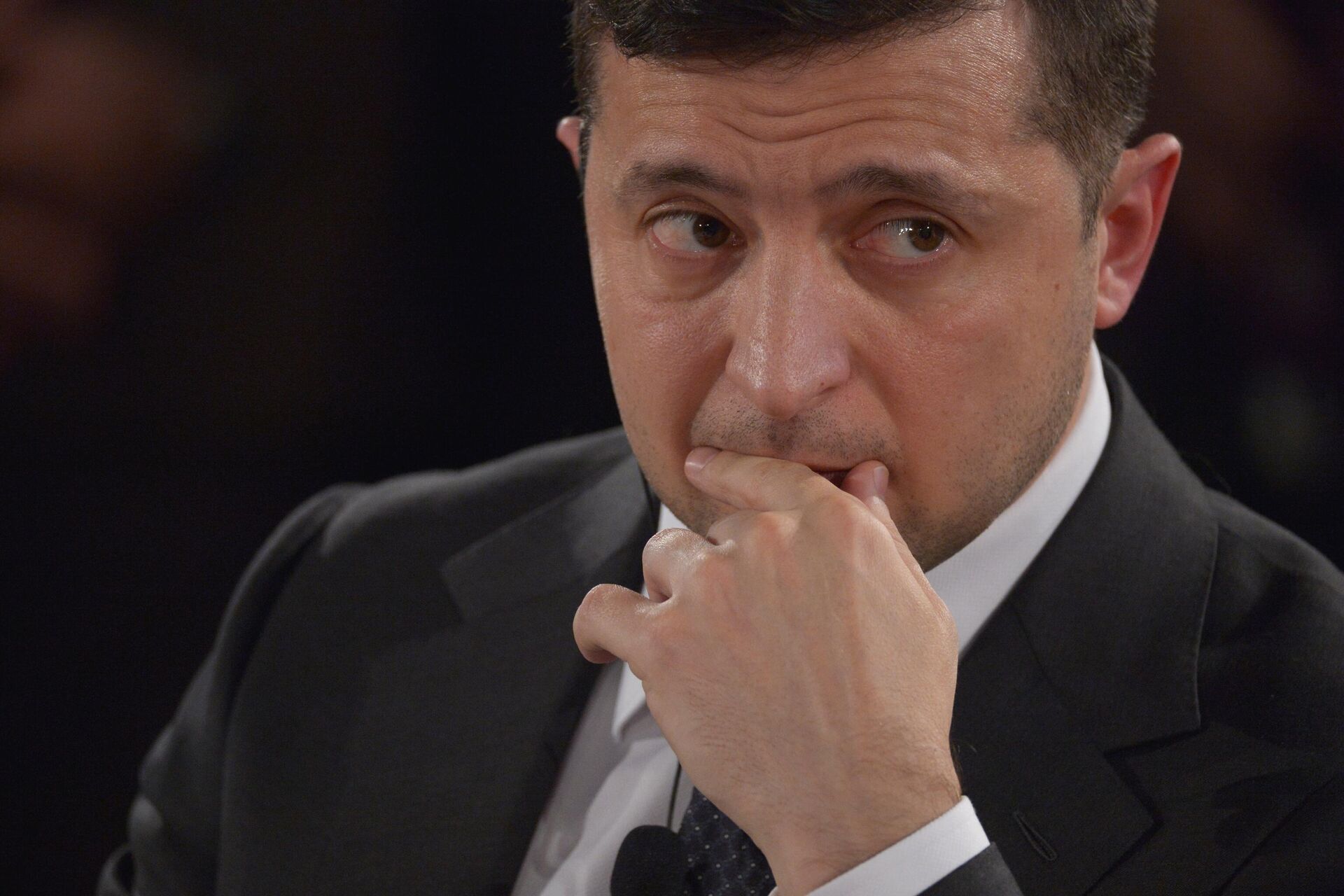Minsk Agreements: Why the Genocide of Donbass Failed to Stop
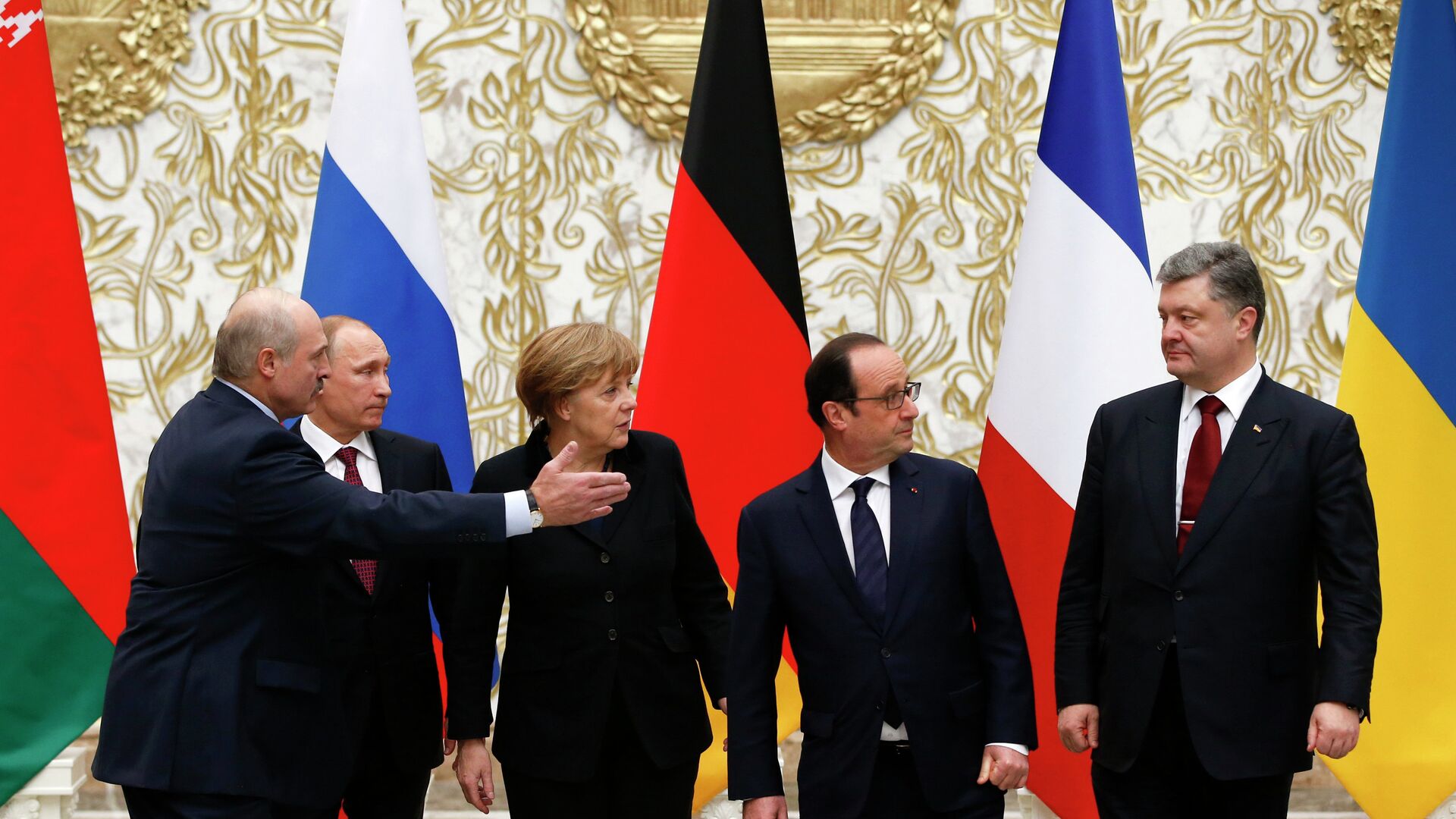
© AFP 2023 / Pool/Grigory Dukor
Subscribe
In the winter of 2015, The Minsk Peace Agreements became the sole possible means to reaching a lasting diplomatic resolution to the conflict in the Donbass. Why were the agreements necessary? What were their main points? Why did they fail to bear fruit and secure peace, and who was responsible?
Prelude
On 24 February 2014, one day after the illegal ouster of Ukrainian President Viktor Yanukovych in a Western-backed coup, Organization for Security and Co-operation in Europe Chairman Didier Burkhalter proposed the creation of a contact group of representatives of the OSCE, Russia and Ukraine, aimed at resolving the Ukrainian crisis and providing “support for Ukraine in overcoming its transition period”.
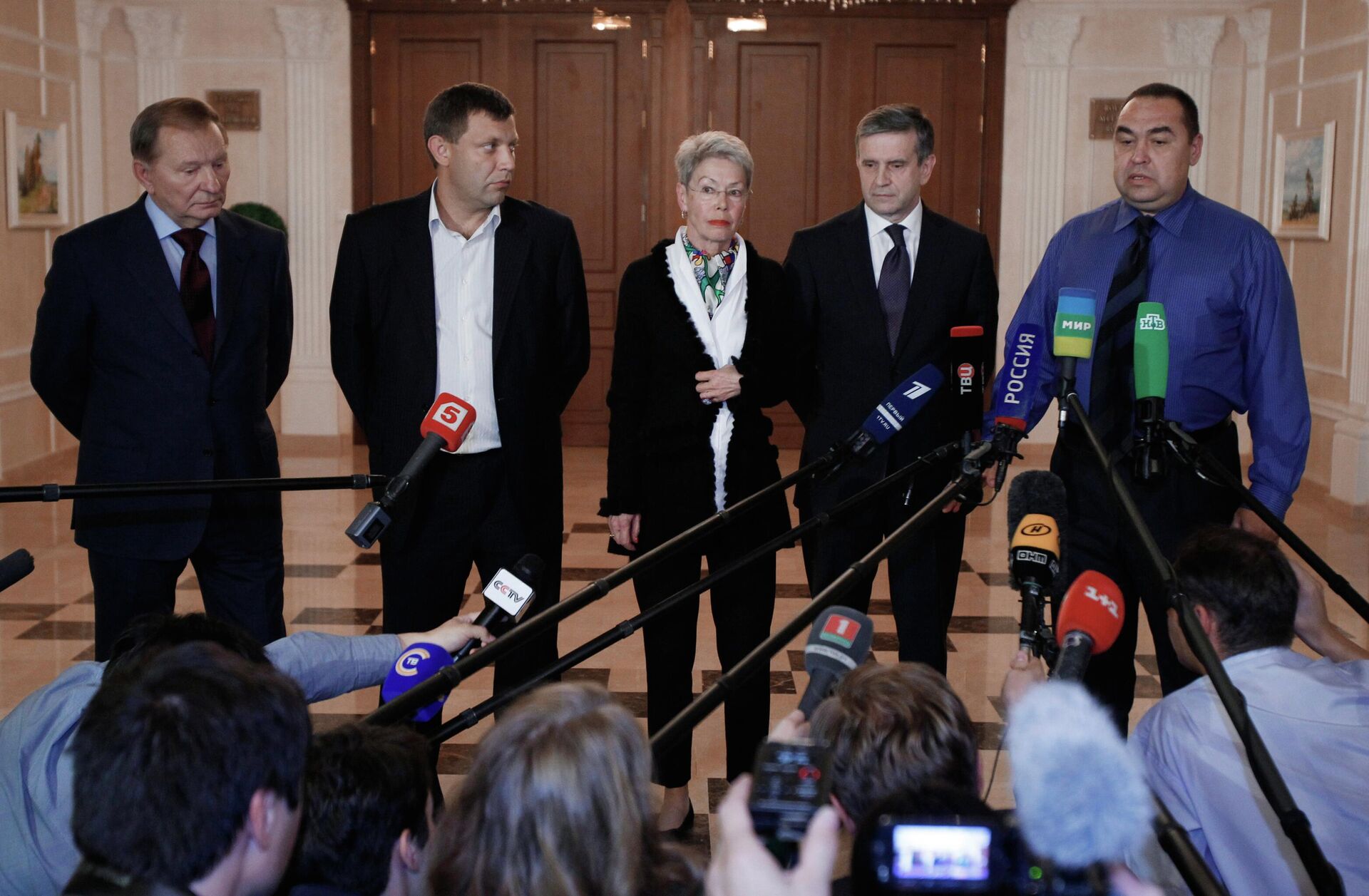
From left: former Ukrainian President Leonid Kuchma; Alexander Zakharchenko, prime minister of the self-proclaimed Donetsk People's Republic; Heidi Tagliavini, representative of the OSCE chairperson-in-office on Ukraine; Mikhail Zurabov, Russian ambassador in Ukraine; Igor Plotnitsky, representative of the self-proclaimed Lugansk People’s Republic, during a meeting of the Contact Group on Ukrainian reconciliation in Minsk, Belarus.
© Sputnik / Egor Eryomov
In June of that year, after the eastern Ukrainian regions of Donetsk and Lugansk became ensnared in a hot war between local independence-supporting militias and Ukrainian troops sent to crush the resistance, the contact group held its first meeting in Kiev.
On 20 June, then-newly elected President of Ukraine Petro Poroshenko proposed a peace plan, saying that his priorities included ensuring the ‘safety’ of the residents of southeastern Ukraine, as well as a ceasefire. As weeks passed, as Kiev and representatives of the newly-proclaimed Donetsk and Lugansk People’s Republics held talks, Ukrainian troops continued their advance deep into militia-held territory, engaging in heavy artillery and mortar shelling, air attacks and attacks on cities, towns and villages in the Donbass region.
Minsk: Origins
Intense fighting continued, and on 31 July, the Belarusian capital of Minsk hosted a meeting with a ‘Ukraine-OSCE-Russia-DPR’ format in which the parties agreed to a prisoner exchange, measures to secure the Russian-Ukrainian border, and a ceasefire in the area around the crash site of Malaysian Airlines Flight 17.
Two weeks after that, contact group negotiators met in Kiev to discuss the logistics of Russian humanitarian aid to the Donbass. By mid-August, Ukrainian forces had taken control of major Donbass cities, including Mariupol, Slavyansk, Artemovsk, and Kramatorsk, and partially encircled the cities of Donetsk and Lugansk themselves. In counterattacks, Donetsk and Lugansk militia forces managed to partially push back Ukrainian forces, and to cause substantial losses in manpower and weapons.
On 1 September, Minsk hosted a second meeting of the contact group.
On 3 September, Russian President Vladimir Putin presented a seven-point peace plan, calling for an immediate ceasefire, the deployment of international observers to monitor the truce, the release of all prisoners, the creation of corridors for the evacuation of refugees and the delivery of humanitarian aid, and assistance to rebuild Donetsk and Lugansk. “I believe that a final agreement between the authorities in Kiev and southeastern Ukraine can be reached and cemented during a meeting of the contact group on 5 September,” Putin said.
Poroshenko immediately dismissed the plan, calling it an “attempt to pull the wool over the eyes of the international community ahead of the NATO summit and an attempt to avert the European Union’s inevitable decision to unleash a new wave of sanctions against Russia”.
On 5 September, the contact group met again in Minsk, hammering out a peace deal by taking account of both the Ukrainian and Russian presidents’ proposals. The plan included an immediate ceasefire, OSCE monitoring, special self-governance status for the Donbass region, the release of all hostages and prisoners of war, and measures to improve the humanitarian situation.

Cars of Organization for Security and Cooperation in Europe (OSCE) Special Monitoring Mission to Ukraine arrive for the withdrawal of troops from the disengagement area on the contact line near the village of Zolotoye, Lugansk Region, Eastern Ukraine.
© Sputnik / Стрингер
/ On 14 September, the protocol was signed by representatives of the OSCE, Russia, Ukraine and the leaders of the Donbass republics. Russia entrenched itself as a guarantor of the peace deal, but not a direct participant in the conflict.
Minsk II
Notwithstanding the terms of the agreement, battles continued to rage. In January 2015, bloody clashes were fought for the Donetsk Airport, and Ukrainian forces were threatened with encirclement and liquidation in the area of Debaltsevo in the Donetsk People’s Republic.
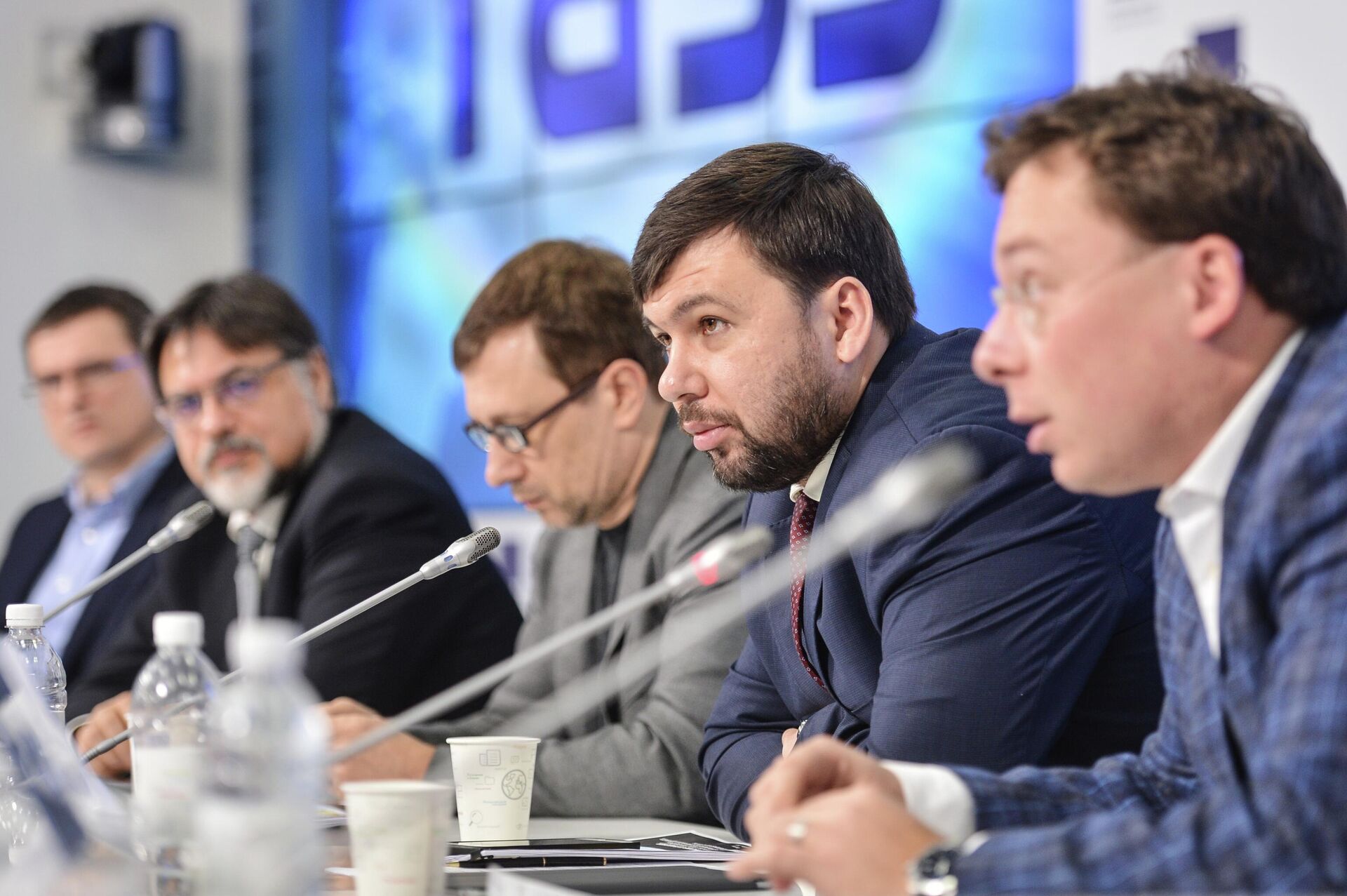
Denis Pushilin, second left, representative of the Donetsk People's Republic for the settlement of the situation in eastern Ukraine, during the roundtable, Minsk Agreements: The Results of 2015.
© Sputnik / Evgeny Odinokov
/ The Minsk Protocol obliged the parties to remove heavy weaponry from the line of contact. However, Kiev and Donbass forces saw their obligations differently, with the militias deeming Ukrainian forces to be trapped inside their territory, while Kiev called for a ceasefire and insisted that its forces were not encircled.
On 12 February 2015, the leaders of the Normandy Four contact group of Russia, Ukraine, Germany and France met in Minsk to sign a new, 13-point plan. The agreement, known as Minsk II, succeeded Minsk I, and Russia, Germany and France would continue to insist on its implementation for the next 7 years.
Devil is in the Details
The Minsk Agreements called for a ceasefire and the withdrawal of forces from the contact line buffer zone, banned the deployment of heavy weaponry in this zone, and required an immediate exchange of prisoners according the principle of “all for all”.
The agreements also called for Kiev to carry out political reforms, including amending the constitution to include the concept of decentralisation and the granting of special status to the regions of Donetsk and Lugansk. The Donbass states were required to hold local elections, after which Kiev could begin to gradually restore its control over the border.
Watchmen
The OSCE, which formed a special Joint Centre on Control and Coordination (JCCC) in the conflict zone in September 2014, was tasked with monitoring the implementation of the 13-point Minsk II plan, but factually had little to do except observe the ceasefire regime while it dragged its feet on implementing the agreement’s political mandates.
On 19 December 2019, Russia was forced to end its personnel’s involvement in the JCCC due to efforts by the Ukrainian side to hamper their work.
Implementation
In nearly 8 years, the parties to the agreement managed to achieve success in only one of the agreement’s 13 points – the exchange of prisoners of war. The Donbass republics and Minsk’s Russian guarantors accused Kiev of illegally absorbing settlements in the buffer zone and deploying heavy weaponry, as well as the regular shelling of settlements.
Kiev argued that it would need to take control of the Donbass’s border with Russia before local elections in the Donbass could be held. In 2015, Ukraine’s parliament, the Verkhovna Rada, approved a law on the Donbass’s special status, but tied its implementation to the local elections, in direct contravention of Minsk’s terms.
Steinmeier Formula
In 2019, participants of the contact group approved the so-called Steinmeier Formula, named after the German foreign minister at the time, Frank-Walter Steinmeier, and aimed at giving the implementation of the Minsk peace plan a much-needed boost. The document proposed the implementation of the 2015 law on granting the Donbass special status after the OSCE recognised local elections there. In addition, it proposed to again have both sides pull back their forces from the line of contact.
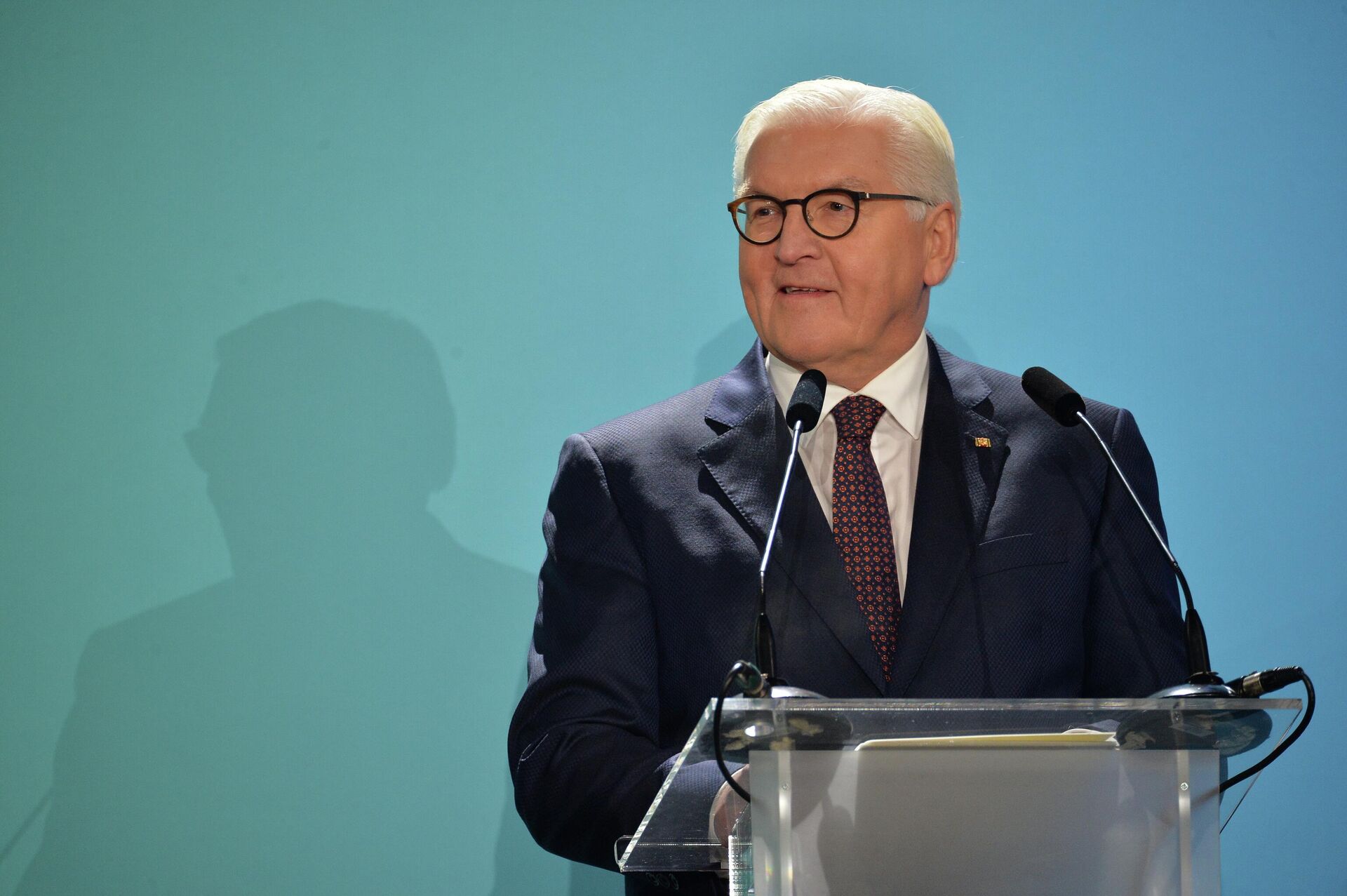
Then-German Foreign Minister Frank-Walter Steinmeier
© Sputnik / Алексей Витвицкий
/ Freshly elected Ukrainian President Volodymyr Zelensky initially expressed support for the proposal, but when pressured by ultra-right radicals, Petro Poroshenko’s allies, and other political forces which had gathered in the streets of Kiev for mass protests, he backed down, preventing the formula’s implementation.
Minsk Breaks Down
Zelensky sought to continue the observation of Minsk’s terms, but failed. On November 2019, fighters from the neo-Nazi Azov Regiment stationed within the village of Zolotoe in Lugansk region not only refused to pull back their weapons, but threatened to increase their numbers.
In 2020, Kiev’s rhetoric took a sharp turn. The Ukrainian government began to insist on the need to revise the Minsk deal. Authorities were unsatisfied with the conditions of the agreement requiring Donbass’s border with Russia to be returned to Kiev’s control only after local elections in Donetsk and Lugansk were held. President Zelensky proposed a new approach to the pullback of forces from the line of contact according to a sectoral principle, instead of across the entire line.
What Changed in 2020?
In December 2020, Zelensky told Ukrainian media that he would personally prefer to scrap the Minsk Agreements, but was unable to do so for fear that European countries might lift sanctions against Russia and the leaders of the unrecognsed Donbass republics. It was too early to speak of an alternative ‘Plan B’, he said.
In 2021, several more meetings of representatives of the Normandy Format were held, but no progress was made. By the beginning of December, the diplomatic path toward resolving the conflict reached a dead end, and the military escalation of the situation along the line of contact began.

